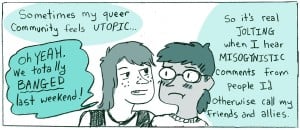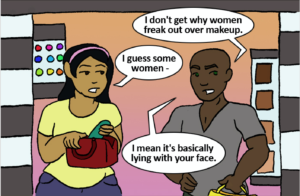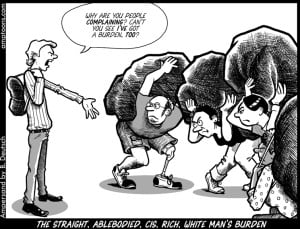
Source: Pond 5
I went through a period — okay, it was more like a decade — where I didn’t like much of anything about myself.
No matter how many times the external world told me that I was smart, beautiful, and awesome, I believed what I believed – and that was that “no, I was not.”
Instead, I would sit for hours wondering what was wrong with me, why I wasn’t like so-and-so, or why I couldn’t just like myself.
During my Decade of Down, I couldn’t figure out how to stand up and walk into another frame. I was stuck.
But, then, something happened.
I got so fed up with not knowing how to change that I no longer cared that I didn’t know how to do it. I was going to do it anyway.
Sure, I didn’t know what I was doing – not exactly. But what I did know was that this period had played out, and I was ready for a new track. I was going to change my relationship with myself.
And now, I want to share how.
1. Get to the Root of the Problem
Okay. So you’ve identified something that you don’t like about yourself. Now, it’s time to open it up and get to the core. Because a problem is just a superficial symptom of a wound that hasn’t healed.
The truth is: Every problem stems from somewhere. And what you want to try to do is to follow the stem back to its root.
That is, you want to pinpoint where the fracture began so that you can see how what you don’t like about yourself is most often a response that you can change.
Think about when you were a child. What frustrated you the most? Did you not get enough attention? Or maybe you got too much attention and didn’t feel like you had any privacy.
Really think about what made you mad and then how you reacted to it.
For example, I know that for me, when I didn’t feel like anyone was paying enough attention to me, I would cop an attitude and get passive-aggressive.
Similarly, think about the negative traits that you want to change about your current self.
What you’ll start to see is that what ticked you off when you were younger is the root. Your response to that frustration is possibly the negative trait that you want to change.
2. Develop a Relationship Vision
Once the source of the problem is identified, it’s time to redefine your relationship to the problem.
What I found most helpful was writing down what I wanted my relationship with myself to be: What did I want it to feel like, look like?
When I wrote down the fill-in-the-blank “I want to feel ________,” words like joy, creative, alive, helpful, loving, sexy, and friendly started pouring out onto the page.
I found that even just thinking about how I wanted to feel inspired me.
Then I picked seven of the feelings from my list and wrote each one down at the top of a piece of paper. On the page where I wrote “alive,” I listed all of the things that I could do right then that would make me feel that way.
Go for a walk. Do jumping jacks. Put on music and dance around. Talk to a stranger. Anything that I could do to feel alive, I wrote down. Then I did the same thing for the other feelings.
Once I had my lists, I looked them over and realized that it wasn’t too difficult to feel the way I wanted to, after all.
3. Create a Ritual
So once I had my lists, I knew that I could either stay the same or courageously step out and try to change my relationship with myself.
Here in my hand, I had a way out of my Decade of Down.
I could see that most of my negative traits were actually reactions to old wounds. Better yet, I knew that I could change them.
So I revised how I wanted to feel and made a promise to myself that I would take responsibility for my feelings. I was committed to feeling good. It was going to become a ritual.
Now, I have a whiteboard on my refrigerator. Everyday, I write how I want to feel on it. I see how I want to feel, and then I do something for myself during the day to make myself feel that way.
I even have a daily reminder app on my phone for this reason!
The point is: Just be doing three simple things – seeing my problems as wounds that need healing, taking responsibility for my feelings by defining how I want to feel, and allowing myself to turn feeling good into a ritual – I could completely change the way that I felt about myself.
And I think that we all deserve that.
[do_widget id=”text-101″]
Cynthia Kane is a Contributing Writer for Everyday Feminism. Over the last year and a half, she’s relearned the following: how to jump up and down when she’s happy, cry when she’s sad, laugh when something’s funny, take a compliment, smile at strangers, and be open to the fact that everyone is going through it all the time. For more, visit her website or follow her on Twitter @cynkane.
Search our 3000+ articles!
Read our articles about:
Our online racial justice training
Used by hundreds of universities, non-profits, and businesses.
Click to learn more




















